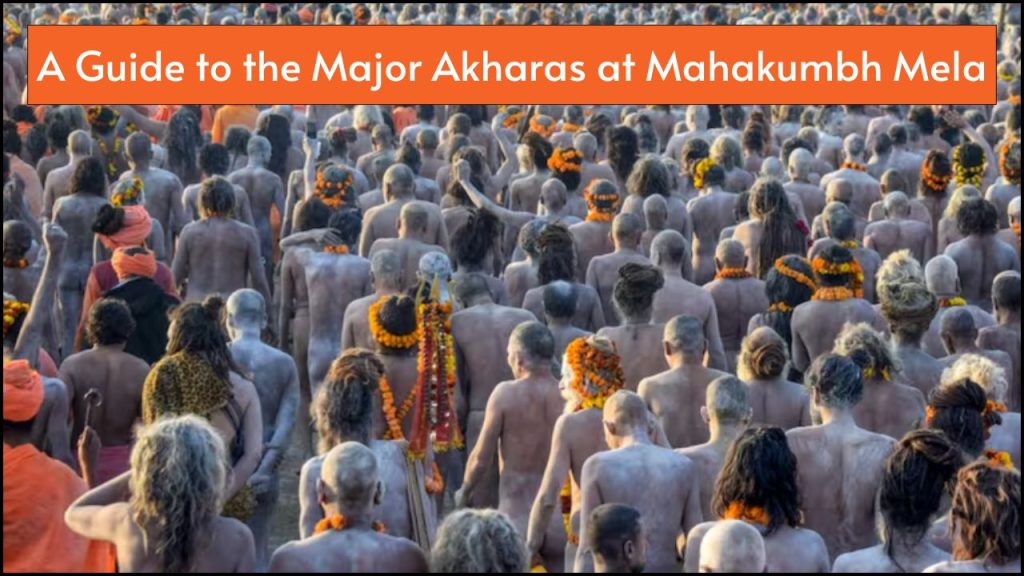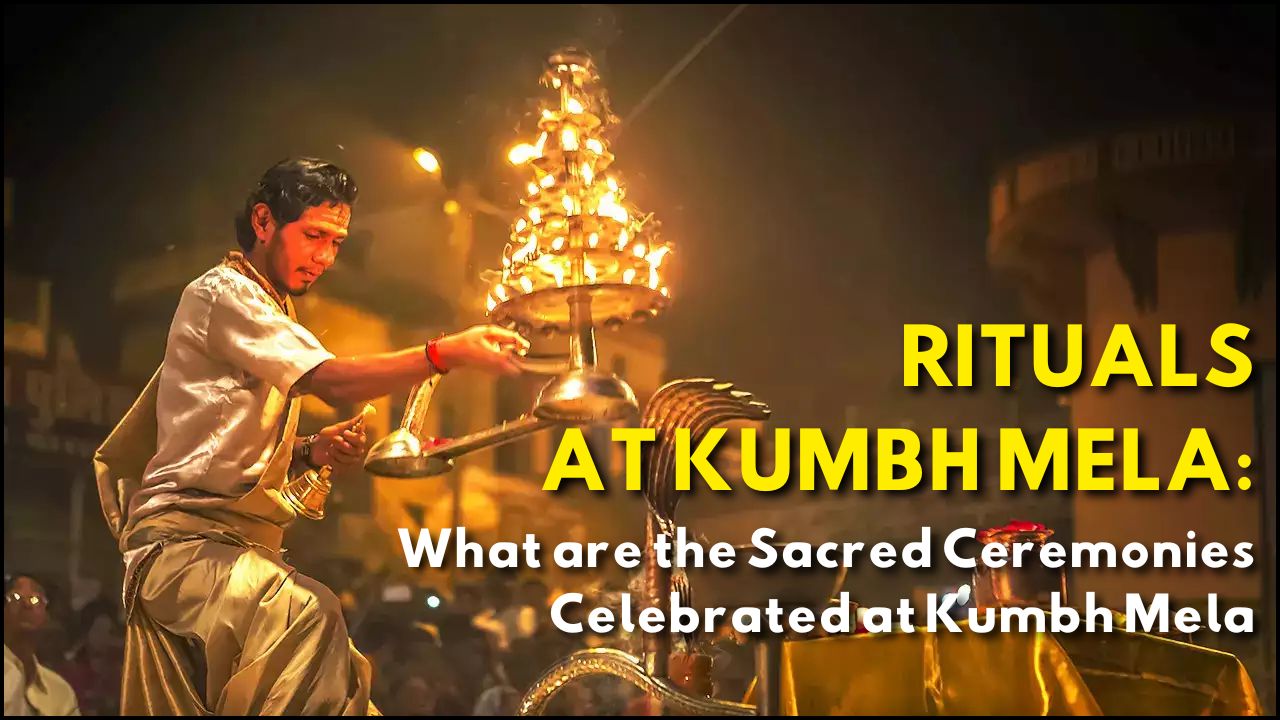
The Mahakumbh Mela is more than a pilgrimage. It is a celebration of faith, tradition, and divine heritage. Held every twelve years, this event sees millions gather on the banks of the sacred Ganges. Central to this spiritual congregation are the Akharas. Ancient monastic orders of saints and sadhus. These groups are not just religious organizations but living repositories of India’s spiritual legacy. Each Akhara holds its own unique beliefs, rituals, and histories, adding rich layers to the vibrant experience of the Mahakumbh.
Table of Contents
What Are Akharas?
- Origin of the Term: ‘Akhada’ is derived from Sanskrit, meaning ‘undivided’ and ‘eternal’, reflecting the uninterrupted spiritual traditions they preserve.
- Founding History: Adi Shankaracharya, the 8th-century reformer and philosopher, established the Akharas to protect and promote Sanatana Dharma.
- Role in Society:
- Preserving Vedic knowledge and rituals
- Spreading spiritual discipline
- Offering education and scriptural guidance
- Performing community service and organizing religious events
Historical Importance of Akharas
- Ancient Roots: Established to uphold Advaita Vedanta and safeguard Hindu beliefs.
- Cultural Preservation: Akharas evolved during periods of foreign rule in India, maintaining the essence of the Hindu religion.
- Spiritual Unity: They form the backbone of religious gatherings like the Kumbh, where their rituals and processions mark the most sacred moments.
Types of Akharas
There are 13 officially recognized Akharas, categorized into three major traditions:
| Category | Akhara Names |
|---|---|
| Shaiva | Shri Panchayati Akhara Mahanirvani, Shri Panch Atal Akhara, Shri Panchayati Akhara Niranjani, Taponidhi Shri Anand Akhara Panchayati |
| Vaishnava | Shri Nirvani Ani Akhada, Shri Digambar Ani Akhada, Shri Nirmohi Ani Akhada |
| Udaseen | Shri Panchayati Udaseen Akhada, Shri Nirmal Panchayati Akhada, Shri Udasin Panchayati Naya Akhada |
- Kinnar Akhara:
A recent addition, this Akhara is composed of transgender devotees. It symbolizes inclusion and equality in the spiritual world.
Governing Body of Akharas
- Akhil Bharatiya Akhara Parishad manages the collective affairs of the Akharas.
- The 13 Akharas are split into two factions for organizational and ceremonial purposes during the Mela.
Major Akharas of Mahakumbh Mela
| Akhara Name | Key Features |
|---|---|
| Juna Akhara | Largest and most influential; famous for grand processions and Naga Sadhus |
| Naga Akhara | Scholarly Akhara focuses on dharma, education, and spiritual purity |
| Niranjani Akhara | Devoted to Lord Vishnu; vibrant bhajans and kirtans form part of the daily routine |
| Mahanirvani Akhara | Emphasizes spiritual discipline and knowledge; over a thousand years old |
| Vaishnav Akhara | Devoted to Lord Vishnu; vibrant bhajans and kirtans form part of daily routine |
| Kinnar Akhara | Represents the transgender community; advocates spiritual equality |
Key Roles of Akharas at the Mela
- Royal Bathing (Shahi Snan): Processions led by each Akhara, showcasing their traditions and inviting divine blessings.
- Spiritual Discourses: Sages and gurus from Akharas engage in public teachings and scriptural debates.
- Social Services: Some Akharas run free kitchens (langars), offer medical aid, and distribute spiritual literature.
Symbolic Identity of Akharas
| Element | Meaning/Significance |
|---|---|
| Flags and Emblems | Represent each Akhara’s deity, values, and heritage |
| Weapons | Held by Naga Sadhus; symbolize spiritual strength and historical warrior traditions |
| Sacred Dress | Simple saffron or ash-covered bodies reflect renunciation and spiritual identity |
| Chanting and Rituals | Include Vedic chants, meditation, and fire offerings to invoke divine grace |
Akharas and Pilgrims
- Access to Wisdom: Pilgrims interact with saints for spiritual guidance.
- Cultural Immersion: Each Akhara opens a window into diverse spiritual practices within Hinduism.
- Unity in Diversity: Despite differences, all Akharas emphasize the same ultimate truth, self-realization, and oneness with the divine.
Unique Features of Select Akharas
| Akhara | Notable Attributes |
|---|---|
| Juna Akhara | Largest gathering of Naga Sadhus; ancient warrior-like lineage |
| Mahanirvani Akhara | Intellectual and organizational strength at the Kumbh |
| Niranjani Akhara | Oldest Shaiva order; scholarly and disciplined |
| Kinnar Akhara | Promotes inclusivity; significant cultural shift in religious representation |
| Vaishnav Akhara | Bhakti (devotion)-centered practices; known for their joyful, song-filled tents |
Modern Participation
- Eracamp Tents: Organizations like Eracamp now provide tent accommodations to pilgrims and seekers, merging traditional experiences with modern comforts.
- Facilities Offered: Clean bedding, private washrooms, vegetarian meals, and guided tours of the Akhara processions.
Why Akharas Matter Today
- Continuity of Tradition: They link the present-day spiritual seeker with thousands of years of Hindu wisdom.
- Living Heritage: Akharas keep ancient yogic and ascetic disciplines alive in a changing world.
- Social Message: The Inclusion of the Kinnar Akhara speaks of a broader acceptance and evolving religious identity in India.
Final Analysis
The Akharas of Mahakumbh Mela offer more than spectacle; they offer spiritual depth, cultural continuity, and living traditions. As guardians of Sanatana Dharma, their presence at the Mela is a reminder of the spiritual purpose behind the world’s largest religious gathering. For pilgrims heading to the 2025 Mahakumbh Mela, visiting these Akharas is an invitation to witness faith in its purest and most diverse forms.





